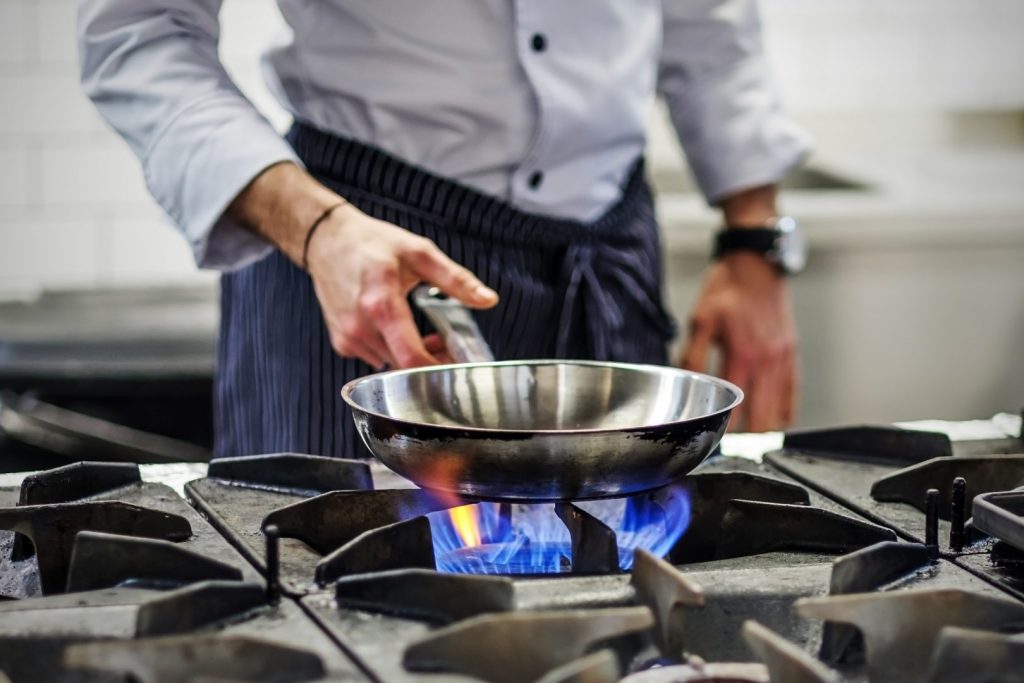
Reaching for a hot skillet that likely also has a hot handle, and not using a mitt or potholder, can provide an unexpected burn and potentially cause us to drop or overturn the skillet and its contents
Families around the world – not just in America or Canada – spend a lot of their at-home waking hours in the kitchen. It is where meals are prepared and served. Many people gather there, eat or snack there, and even park in front of the opened door refrigerator for inspiration on something to eat. Neighbors are entertained there, and many a sales presentation (life insurance, vehicles, property, home improvements, the children’s educational needs, camps, and other items) has occurred at the kitchen table. In short, it is a gathering place.
Because of the number of activities that are conducted in the kitchen and the number of people who can be in the kitchen at any one time (including visitors and guests), the kitchen takes on added importance as a focus of maintaining safety in the home.
Look at the many possible calamities and incidents that can occur in the kitchen:
Burns may stand out as the most obvious potential injury in the kitchen. They certainly can be painful and they can catch us off-guard. We are preoccupied with preparing the meal and can get a little distracted or sloppy in how we work around hot object s in the kitchen. We can touch hot pots and pans – while they are on the cooktop or in the oven or even after we have removed them but they are still hot. We can get too close to steam that is escaping from cooked food or heated containers. Of course, we might accidentally touch a hot burner (even without realizing that it was hot sometimes) electric) or the oven door or shelf. We might eat or drink something – intentionally or just trying to sample it – when it is too hot for us to be consuming it comfortably. We might have heated liquid splash onto our skin from a cooking vessel or serving container. We could spill hot liquid or cooked items from a pot or serving vessel onto our clothing, hands, arms, legs, or feet. We could use water from the faucet when it is too warm, and those instant hot water dispensers can present issues by giving us hotter water than we expected. We could possibly touch a lighted candle or light bulb when it is on, although LED bulbs generally have no heat as compared to an incandescent or a halogen bulb.
We can cut ourselves almost anywhere we are – at home or elsewhere – but the kitchen offers more than its share of potential opportunities for us to receive a skin injury from a sharp object. The kitchen, other than the garage, likely has more sharp and cutting objects and tools than any area in the home. There are knives and scissors, the sharp or abrupt edges of plastic packaging, paper cuts that can happen in multiple ways, sharp lids from cans although they are becoming less problematic than in years past, sharp or blunt animal bones that we could stab or impale our fingers while preparing meat dishes, broken or chipped edges on glass serving dishes or drinking glasses and cups, and cracked or broken surfaces or edges on glass or ceramic cutting boards. Also, we might step onto broken glass from something that just broke after falling onto the countertop or floor, or fragments of it could bounce and hit us in the arm or leg. We might walk into the edge of an open cabinet door or other relatively sharp surface and cut ourselves in this way.
We can bruise ourselves by walking into the corners of cabinets or countertops, hitting open appliance doors (oven, microwave, dishwasher, or refrigerator), bumping into the leg of a table or chair, or dropping a canned good or frozen item onto our hand or foot.
By handling frozen foods for prolonged periods without protection or working with frozen meat, fruit, or vegetables to cut them into serving-size pieces can cause frostbite – discomfort at the least.
Falls are problematic in the bath, but the kitchen has more than its share as well when we use a step stool, chair, or ladder to reach a higher shelf, or when the chair we were depending on to support us moves out of the way or breaks as we are attempting to sit on it.
While not a fall, we can slip on spilled water, other liquid (juice or oil, for instance) or a piece of ice that might have landed on the floor and gone unnoticed until we stepped on it.
We might pinch our skin between two objects, gett a finger or other part of the body partially shut into a door or drawer, or stretch to retrieve something a little beyond our reach and injure ourselves in this way.
There are just so many potential dangers in the kitchen that we need to be quite careful to keep injuries to a minimum.
